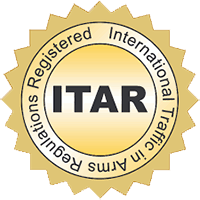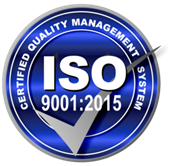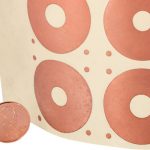
An Expert’s Guide to EMI Shielding
PEEK, Ultem, and other high-performance polymers, coupled with electroplated metals, have helped bring about significant technology advances in commercial plating and, more specifically, EMI shielding. Here, we will cover why EMI shielding is essential and the options available for today’s engineers.
What is EMI Shielding?
Electromagnetic interference (EMI) shielding helps protect against signal disruption, preventing external electromagnetic signals from disrupting a specific component and preventing generated signals within parts from being disruptive to their surrounding components.
Why is EMI Shielding Important?
EMI can be particularly disruptive to commercial industries, including electronic devices and systems in critical medical, automotive, and aerospace environments. EMI shielding helps prevent disruptions to mass transit systems, industrial manufacturing, navigation systems, and other areas essential to day-to-day lives. Our global business climate and the robustness of the technology we rely on are also dependent on it.
EMI can come from both artificial and natural sources. The problems it can cause can range from superficial and temporary lapses in communication to complete system failure resulting in death. For that reason, engineers are interested in ways to protect from EMI in commercial environments.
Industries Where EMI Shielding is Critical
Commercial applications of EMI shielding include:
- Cellular and Radio Communication: Cell technology, radio, and other communications rely on clear signals to operate correctly.
- Healthcare: Hospital Facilities use highly sensitive medical equipment to which any type of interference could have a deadly result. The Food and Drug Administration (FDA) regulates shielding for medical devices that might be impacted by EMI, like patient monitoring machines, MRI systems, cardiovascular devices, and other medical electronics.
- Future Mobility and EV Technology: Cars, trucks, and all forms of transportation are engineered with extensive sensing equipment to allow for self-driving, efficient traffic management, and new high-tech safety features. This gear uses radio and other communications equipment that benefit from EMI shielding to prevent damage to and malfunction of sensitive components.
- Aerospace: Aerospace engineers need to ensure that flight personnel can be in constant contact with ground staff. Interference in this communication could result in a dangerous situation. Minimizing EMI interference is one of the reasons our mobile phones have “airplane mode.”
Plated Polymers For EMI Shielding
A practical and commonly used way to prevent EMI is to apply metal shielding to a plastic enclosure around a device or component. PEEK, Ultem, and other high-performance polymers can be custom-printed using exacting 3D models to create an enclosure. These two polymers can help overcome EMI, highly corrosive environments, and extreme heat in high-tech commercial industries.
Plating plastics with metals that reflect interference helps minimize EMI. Copper, silver, nickel, or a combination of some or all of those metals are all solid options that, when highly pure, are highly effective. Some experts consider copper to have an advantage in that it is effective for attenuating both magnetic and electrical waves.
How Much Can EMI Be Reduced?
The amount of interference that EMI Shielding will potentially reduce depends on several factors, including the materials used, the thickness of both the polymer and the metal plating, the size of the component that is being shielded, the frequency of the electromagnetic fields that are causing the interference, and any gaps in the shield. It’s a complex question that is typically answered on a case-by-case basis.






